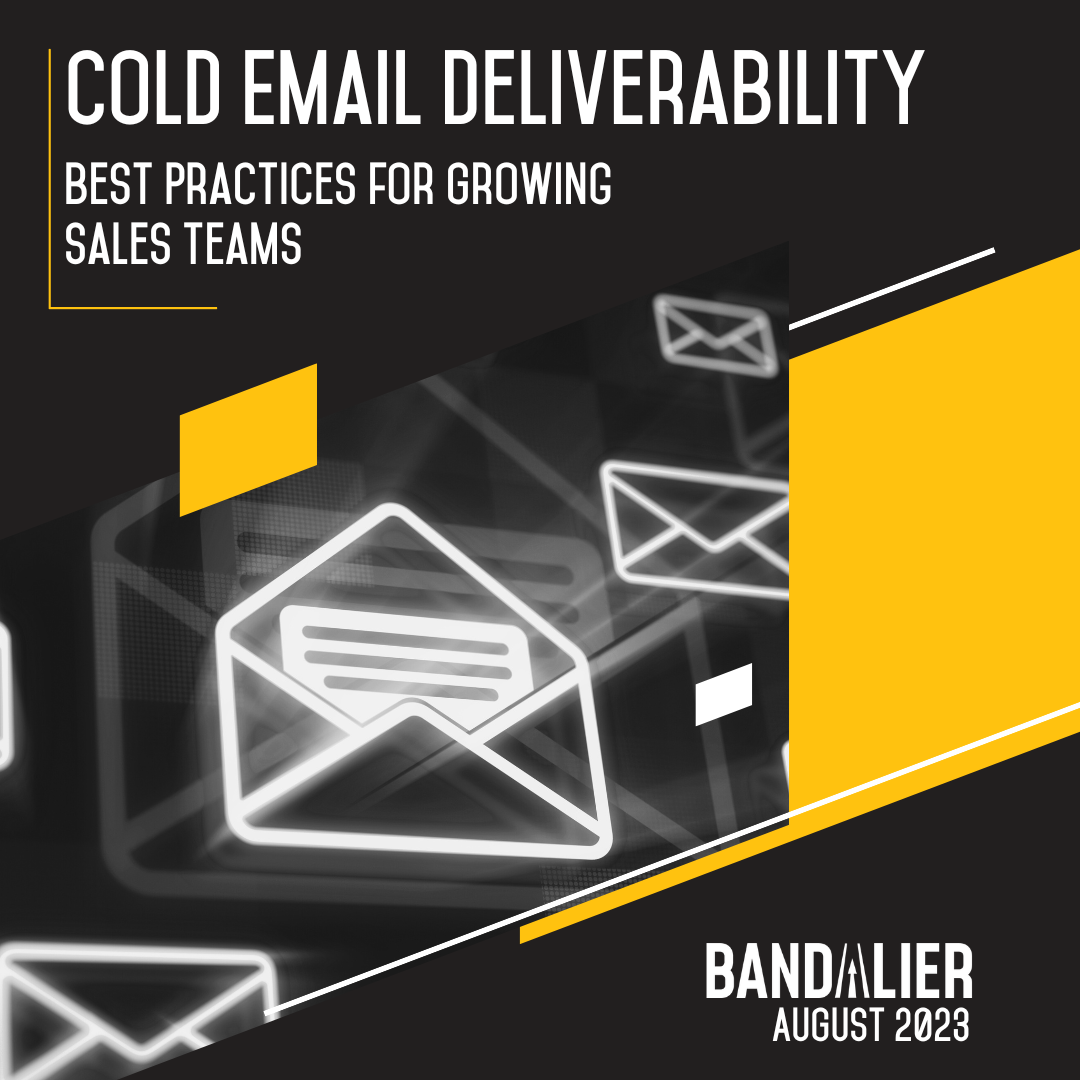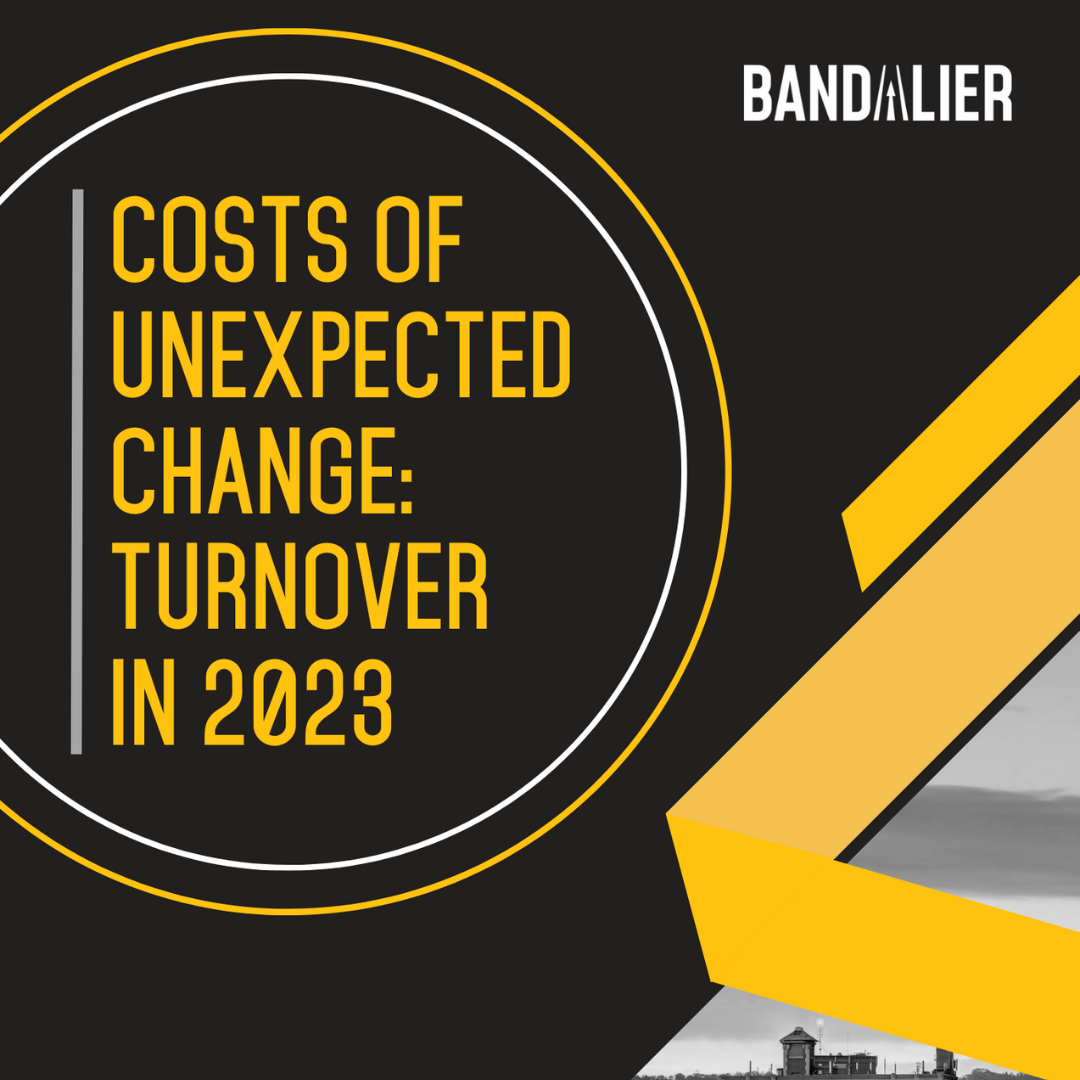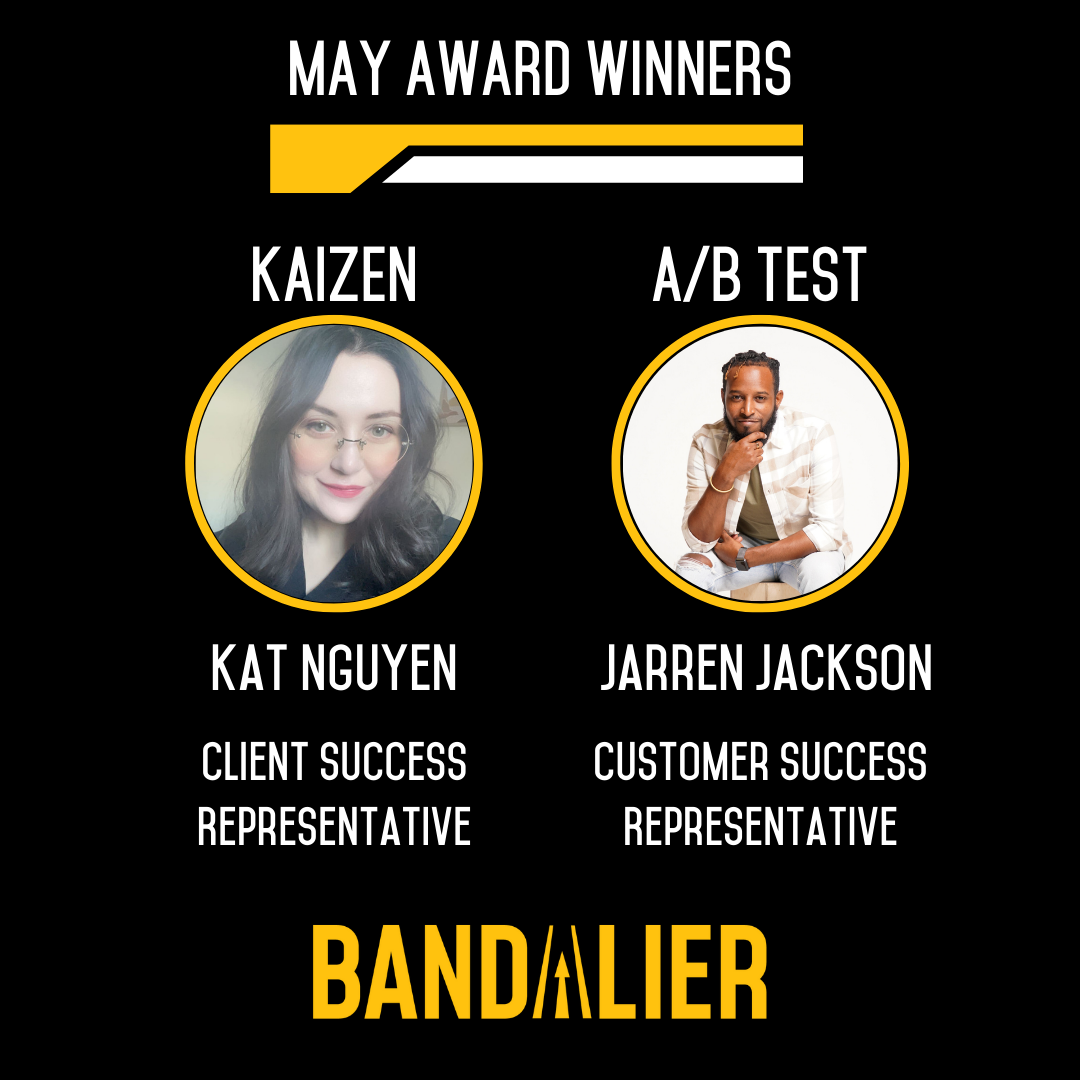Jeremy recently joined James Mackey’s Breakthrough Hiring Show to share our favorite learnings – catch the full episode here, or keep reading for the highlights.
Structured Interviews
Bandalier’s interview process relies on the feedback loop we’ve built across our hiring, training, and performance management teams. As new team members grow into their roles, we create a holistic summary of their performance. We reflect on key traits that the team member has demonstrated, such as resilience or adaptability, and assess their performance relative to their interview responses. After hiring hundreds of salespeople to join outsourced inside sales and customer success teams, we’ve identified key indicators of success and altered our interview process to prioritize our most predictive questions.
When we ask questions in the interview process, we’re careful to phrase them the same way – let’s look at an example from Jeremy and James’ conversation to illustrate why:
Two highly skilled candidates apply for the same role.
The first candidate is asked a simple question: tell me about your experience with this software. They recount their years of experience with different versions and applications of the software and emphasize their adaptability.
The second candidate is asked a similar question: tell me about the best project you completed using this software. The candidate describes their experience, the different applications they tested, and the final results of their project. Along the way, they have the opportunity to share the specific outcomes of their project.
Your interviewers share their thoughts afterward – the first candidate seems fine, but, wow, that second candidate! So many details in their answer – they seem like a much better choice.
Is that a fair conclusion to make? The second question addresses a specific event, not the candidate’s general experience. Can you accurately compare the responses that the two candidates offered? Maybe – but changing the phrasing of your questions adds a variable to your interview process that your hiring team will need to bear in mind.
Structured Training
Once candidates become team members, companies have the opportunity to continue collecting data on their performance. Building a structured training and onboarding process is key to doing so. When our newest team members begin Bandalier University, our best-in-class sales training program, we help them ramp up faster by communicating our expectations. We describe what they can expect during the training process and what success looks like during their 90-day ramp period. We also discuss what can happen if they don’t meet expectations. Transparency is one of Bandalier’s core values, and we want to ensure that our team members understand what’s expected of them in their new roles.
As Jeremy, James, and many interviewers have noted, it’s easy to answer questions well during an interview – you can only truly begin testing candidates’ skills during the training process. If candidates fail to demonstrate key skills, you may need to make the difficult decision to end their time with your team. While it’s always painful to let someone go, doing so shortly after hiring reduces the impact on both parties. Make sure that new team members understand that this is possible – fairness and transparency are key to delivering the best experience possible. With a structured, consistent training and onboarding process, you can be confident that every new team member will perform at a high level.
For companies that are focused on scaling quickly, it can be challenging to build a structured interview and onboarding process. Contact Bandalier today to learn more about how we hire, train, and deploy customer-facing teams.














